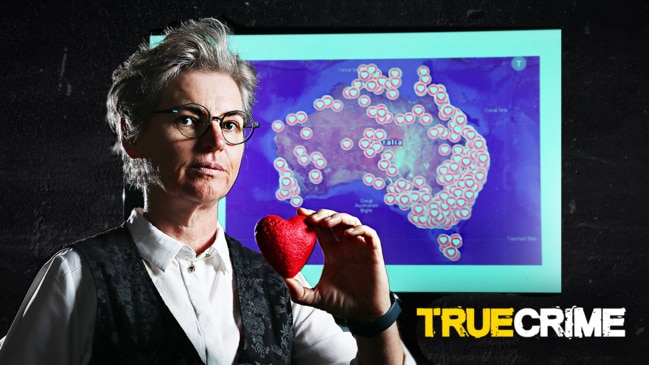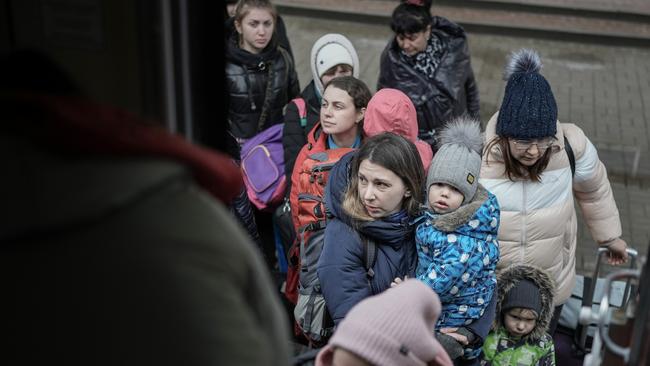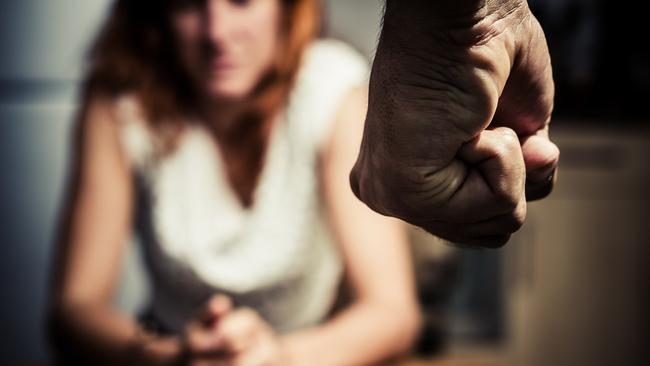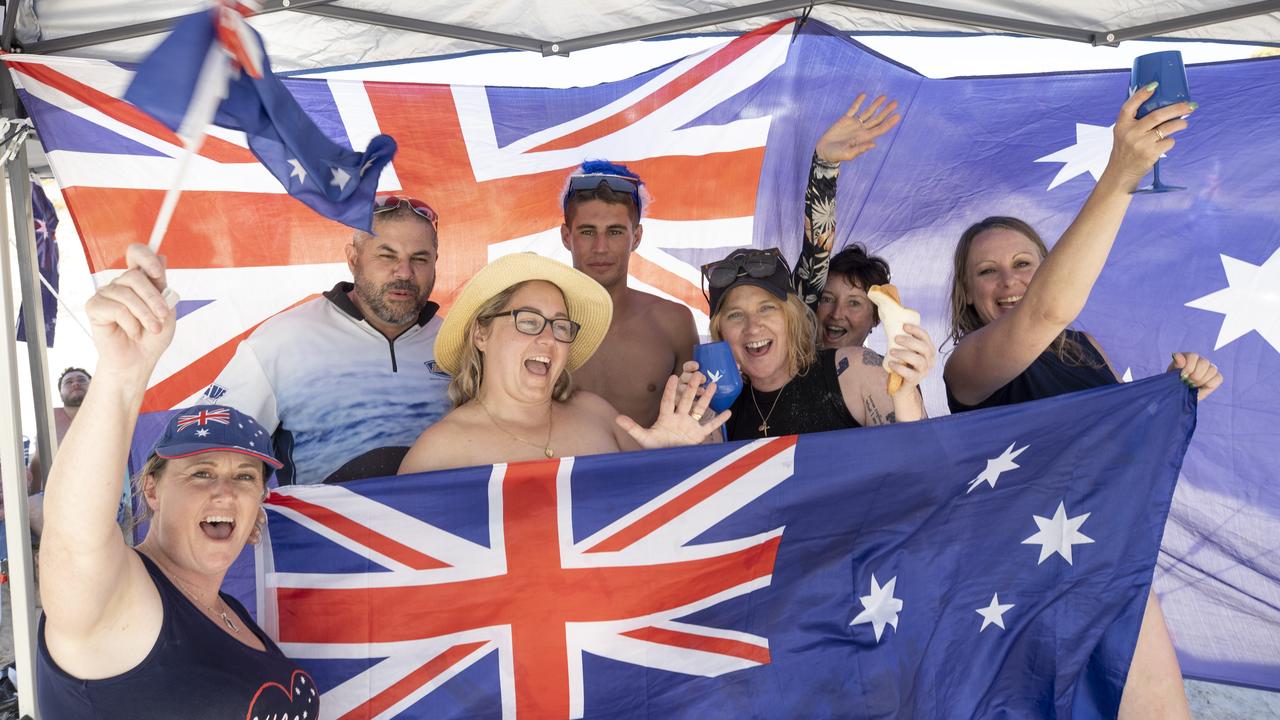Erin Molan: Every woman has the right to feel safe in her home
As we watch the horror of women fleeing Ukraine, we should remember, too, that some woman are not safe in their homes right here in Australia, writes Erin Molan.

Opinion
Don't miss out on the headlines from Opinion. Followed categories will be added to My News.
Whenever I park my car at night, whether in a carpark or on the street, I ring someone before getting out and talk to them until I reach my destination.
I’ve done this for as long as I can remember. Not because I feel like a chat, but because I don’t feel safe.
My chest gets a little tighter, my breath speeds up and I walk quickly. Anyone I encounter, any footsteps I hear, will automatically be treated as a potential threat.
Like most habits, this one formed and became second nature without me realising it. For me and many female friends, it’s just part and parcel of being a woman.

All women share the tacit recognition that, as a result of our gender alone, we have an additional vulnerability in certain settings that requires these kinds of practices.
This has perhaps been heightened for me by years spent in newsrooms exposed to horrific stories of violent atrocities happening to women alone at night. I would rather be viewed as paranoid, cautious, even unfriendly, than become one of these stories.
Experiencing violence as a woman is by no means a remote possibility. Our Watch, an organisation working towards the prevention of violence against women, reports that one in three women will experience physical violence from the age of 15.
And where do most of these experiences happen? Not in the carpark, not in the streets, but in the home.
When I complete my heart-pounding night-time walk, reach my front door and wrap up my phone conversation, at this stage in my life I am fortunate to be entering a safe place. For many still, that is where the real danger begins.

Domestic violence statistics are sobering. On average 10 women a day are hospitalised for injuries inflicted by a spouse or domestic partner. And, sadly, they might be considered the “lucky” ones, compared to the one woman every week who is murdered by a current or former partner.
This violence does not just affect the victims. It has a significant secondary impact on thousands — friends, families, communities and, of course, our women and men in blue who are on the frontline of this epidemic.
Last week, I was part of an Australian Federal Police function for International Women’s Day. A senior officer shared that she joined the force having watched her mother suffer for years at the hands of a violent partner.
She’s not alone either. To many of our exceptionally capable and resilient first responders, this is a deeply personal issue. For many outside of the force, it is too, myself included.
It seems that every year around this time, the spotlight of International Women’s Day illuminates the scourge of violence against women for a brief period, before public attention moves on.
This has been particularly noticeable this year, where the day and the issues it stands for have been somewhat drowned out by (undoubtedly highly newsworthy) events including the horrifying invasion of Ukraine.
In the vision of that conflict that we have watched unfolding before our eyes, it is evident that women and children are not being spared … in fact quite the opposite.
With most Ukrainian men of fighting age drafted into the military defence effort, it is the women we see at train stations, in bomb shelters, protecting babies with their own bodies, bundling up shell-shocked children against the subzero temperatures and herding them on to refugee trains.
Again, as inconceivable as it might sound, they could be considered the “lucky” ones, we’ve all seen the images of lives taken far too young and cruelly over the past few traumatic weeks. For the innocent and vulnerable, the world can undoubtedly be an unfair, ugly and terrifying place. But so can the home next door.
When we turn on our TVs and experience the very human reaction of shock and devastation over the violence in Ukraine, and weep in particular for the innocent victims, we must also acknowledge what happens in our own communities — and is happening every single day.
So what is the solution? How do we change what is happening, mostly behind closed doors, mostly to victims who might feel ashamed, or afraid to speak out?
How do we break a cycle of violence which is, as the policewoman pointed out to me the other day, often entrenched and generational?

Chief executive of Our Watch, Patty Kinnersly, says it’s possible: “We can stop violence against women. Decades of research tells a very clear story, that for women to be safe, they must be equal. Equal in our homes, workplaces, community, schools and all levels of government.”
A fortnight ago I was invited to dinner with around 20 other women, many very powerful and prominent in their industries, to discuss this exact issue — gender equality and how to achieve it.
For a lot of women not present at the gathering, many struggling to pay for petrol, hold down two jobs and look after multiple children, the concept of “gender equality” might be well down the priority list and understandably so.
It has been for me in the past, too, but once you start to understand what achieving it might actually mean for all of us then it becomes obvious just how badly we need it — and not just for the benefit of women, but every Australian.
None of us have definitive answers, but this group is trying — and is incredibly committed to the task.
In an election year, there is certainly an enhanced focus on what government can and should do in this space. However corporate Australia also has a role to play.
The introduction of domestic violence leave by many private-sector employers in recent years is a small but tangible example of what can be done, but there is much more that needs to happen.
Leaving the dinner, I felt a little bit optimistic about the prospects of reducing the statistics in the future, so that my own daughter never falls on the wrong side of the unacceptably high “one in three” statistic.
And as I walked back to my car, my hand automatically diving into my bag to make my “safety” phone call, I looked forward to a day when I didn’t have to.



